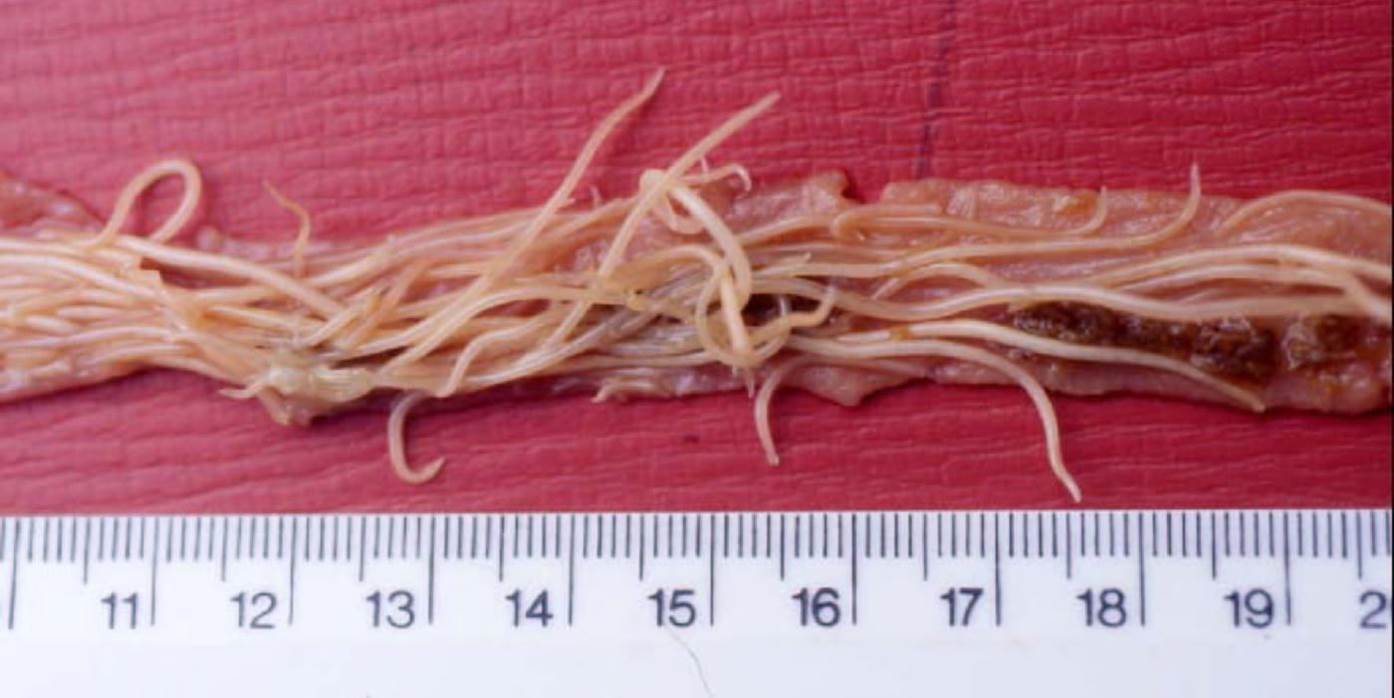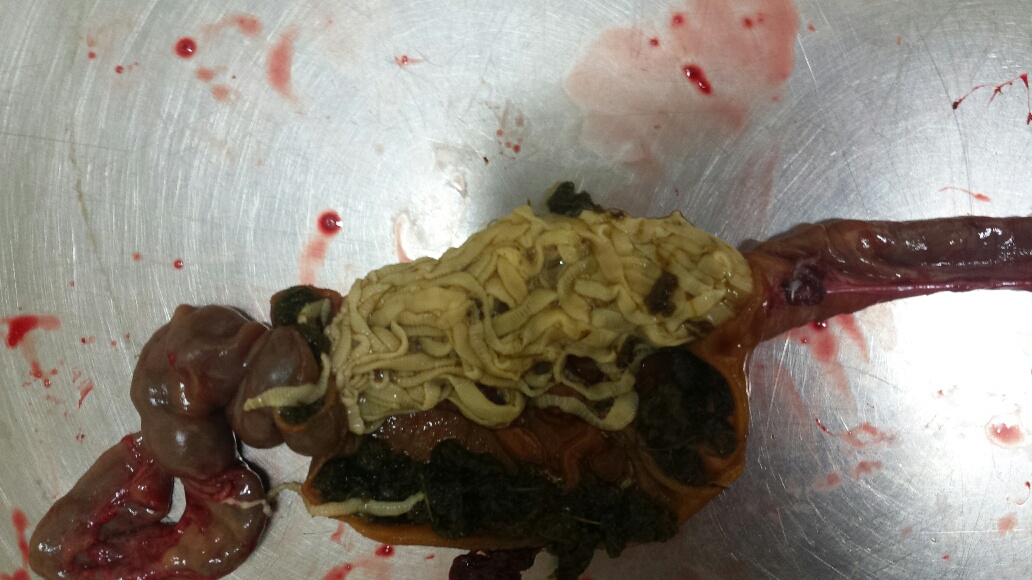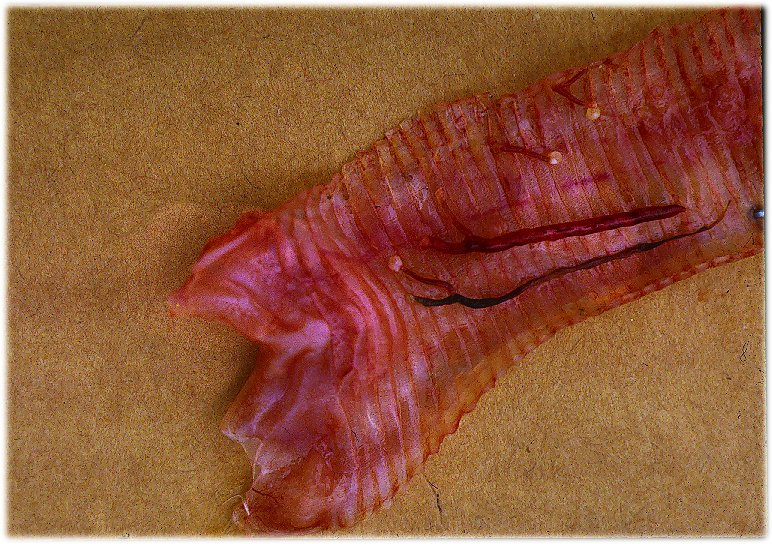When we talk about worms in game birds, we are usually referring to gapeworms, as these are the most common, especially in pheasants and partridges.
Gapeworms cause the birds respiratory problems via irritation in their windpipe and thus the bird is usually seen to be 'snicking' and shaking their head. Other types of worm that game birds can suffer from include the caecal worm, hairworms, roundworms and the grouse worm. The life cycle of the worm in pheasants and partridges means that the worm produces many eggs that can infect the ground on which the bird is reared. Moving rearing fields every year is a good practice, as is disinfecting all equipment used, otherwise the infection may follow to the new site.
Clinical Signs
For gapeworm (Syngamus trachea) the clinical signs in affected birds are coughing, sneezing, snicking, gaping (the hissing noise made with the bird's neck stretched out and mouth open gasping for air), head shaking and neck stretching.
For caecal worms (Heterakis gallinarum) there are few clinical signs, and in small numbers they are of little significance. The complication of infection with caecal worms is they can transmit histomoniasis (blackhead). Signs of blackhead are frothy yellow diarrhoea, weight loss and mortality, there can also be the classical lesions on the liver (Figure 1). If there is a heavy burden of caecal worms, this may also affect breeding performance and reduce body weight.

Figure 1 Typical Blackhead lesions in the liver
Clinical signs of infection with hairworms (Capillaria sp.) include weakness, weight loss, and dullness, difficulty in swallowing, regurgitation and diarrhoea.
Roundworms (Ascaridia compar) are generally less pathogenic but there can be clinical signs of loss of condition, poor growth, listlessness, diarrhoea and wasting, mainly in young birds (Figure 2).

Figure 2 Ascarid worms in the small intestine
Grouse worms (Trichostongylus tenuis) damage the mucosa of the caeca and this presents as weight loss, reduced reproductive success and can result in death. Grouse can tolerate these worms in fairly significant numbers, but counts of over 4000 are associated with caecal damage. These worms are very common in red grouse but are uncommon in pheasants or partridges.
Tapeworms are also very common in red grouse, but less common in pheasants or partridges. It is open to debate whether tapeworm infection is significant or not, although recently they have been seen in such large numbers to cause ballooning of the gut and possible blockage (Figure 3).

Figure 3 Occlusion of the gut in a red grouse with tapeworms
Gut worms cause inflammation in the intestines which can exacerbate other infections such as coccidiosis and Spironucleus (Hexamita).
Post Mortem Findings
Gapeworm infestation usually causes tracheitis, inflammation of the trachea, and the presence of the characteristic red worms up to 2cm long in this organ is diagnostic. They form a Y shape as the smaller male is permanently attached to the larger female worm (Figure 4).

Figure 4 Gapeworm in trachea showing red colour and classical 'Y' shape
Caecal worms can cause inflammation of the caecum, possibly with nodule formation at post mortem and caecal 'cores' if blackhead is present.
Hairworms are very long and very thin, and are barely visible with the naked eye. A post mortem examination would find them in the small intestine or upper digestive tract.
Due to the large nature of roundworms, they are easily seen at post-mortem and can be up to 12cm in length in the duodenum and ileum, an enteritis, inflammation of the gut, can also be present.
Tapeworms again are large and visible to the naked eye. They create very small lesions at point of attachment to the gut wall.
Diagnosis
Gapeworm is diagnosed by the clinical signs (outlined above) and presence of the worms in the trachea at post mortem. Eggs can also be found in a worm egg count of the faeces.
Diagnosis of caecal worm is through a post mortem examination, in which the presence of adult worms in caecal contents is diagnostic.
Hairworm diagnosis is either through macroscopic examination, sieving intestinal contents or spotting the characteristic worm eggs in the bird's faeces.
Roundworm can be diagnosed via post mortem exam and visualisation of the large worms in the gut and identifying oval smooth-shelled non-embryonated eggs in faeces in a worm egg count test.
Diagnosis of tapeworms is a post mortem examination which identifies the presence of worms-they are large and easily distinguishable in the gut. Worm eggs can also be visualised in faecal counts.
Treatment and Control
The life cycle of the worm is around 18 to 21 days and is moisture and temperature dependant. Control is by the addition of licensed wormer in the feed, any other methods of control using drugs prescribed under the cascade system should be discussed with your vet. Birds will build up immunity over time, but when birds come in to lay, this immunity will weaken, so do not forget to worm laying birds on a regular basis. Although game keepers are familiar with the signs of gapeworms, caught-up birds in the spring are more likely to be carrying the less-obvious hairworm, and so should be wormed as soon as possible after catching. Regular cleaning (disinfecting) of all equipment and bird housing is also a useful adjunct to helping in worm control. As stated in the introduction, moving rearing fields is also useful, providing you remember to clean and disinfect all of the equipment you take with you!
In grouse, the worm infestation is controlled by using medicated grit.
It is important to discuss and formulate a worm control programme with your veterinary surgeon and this should form part of your health plan. The potential development of wormer resistance is something that is always of concern. Always remember that wormers have a meat withdrawal period too!





